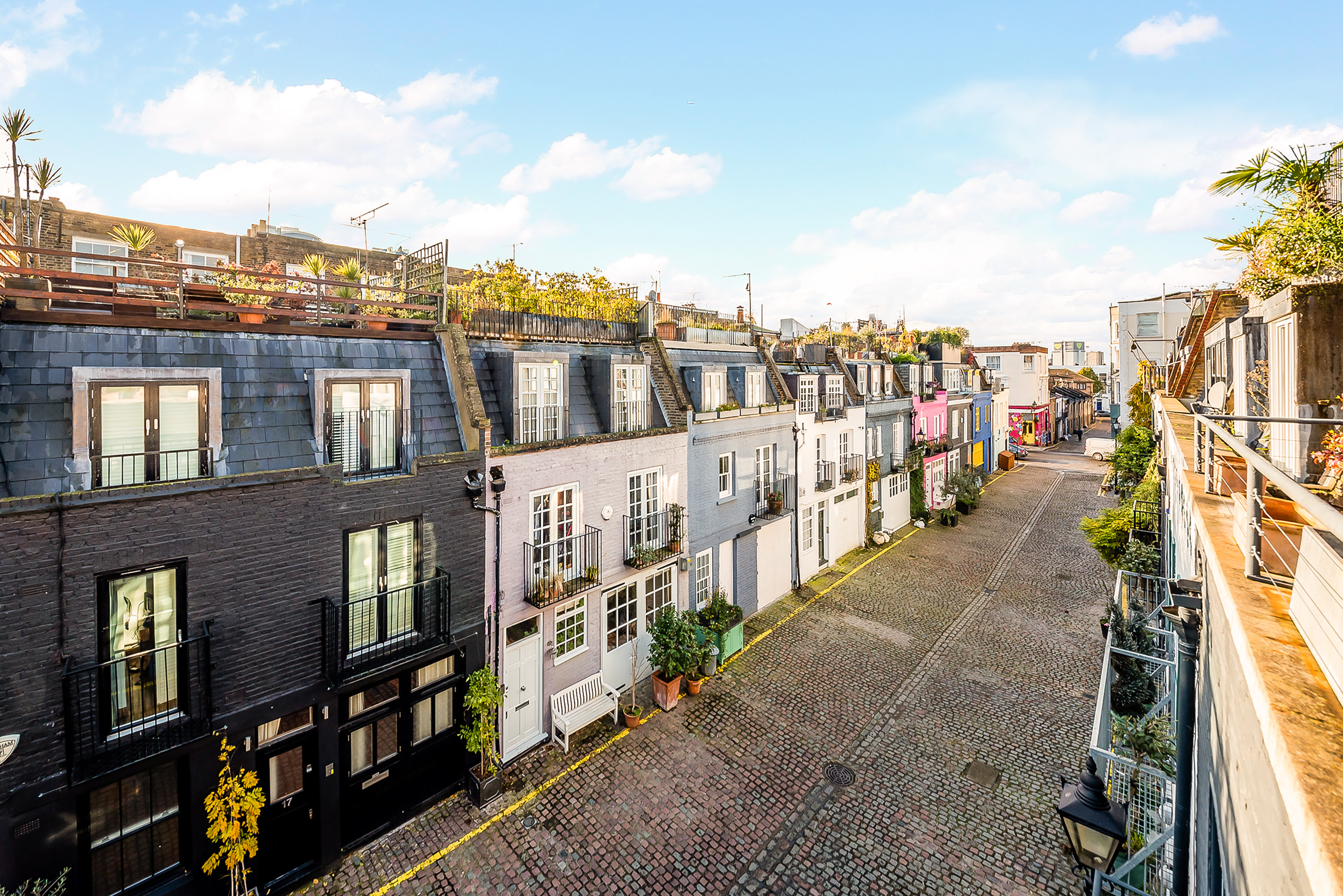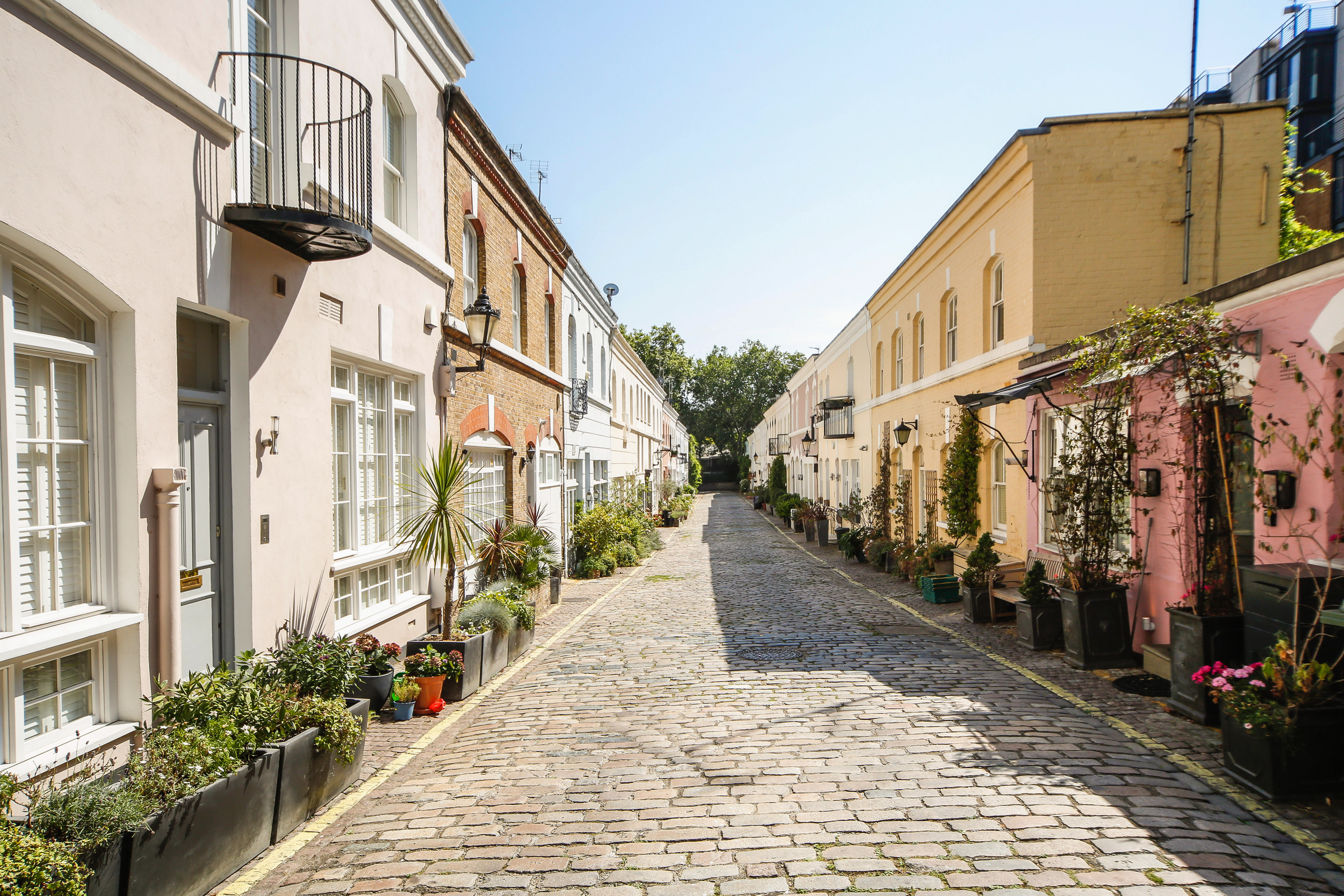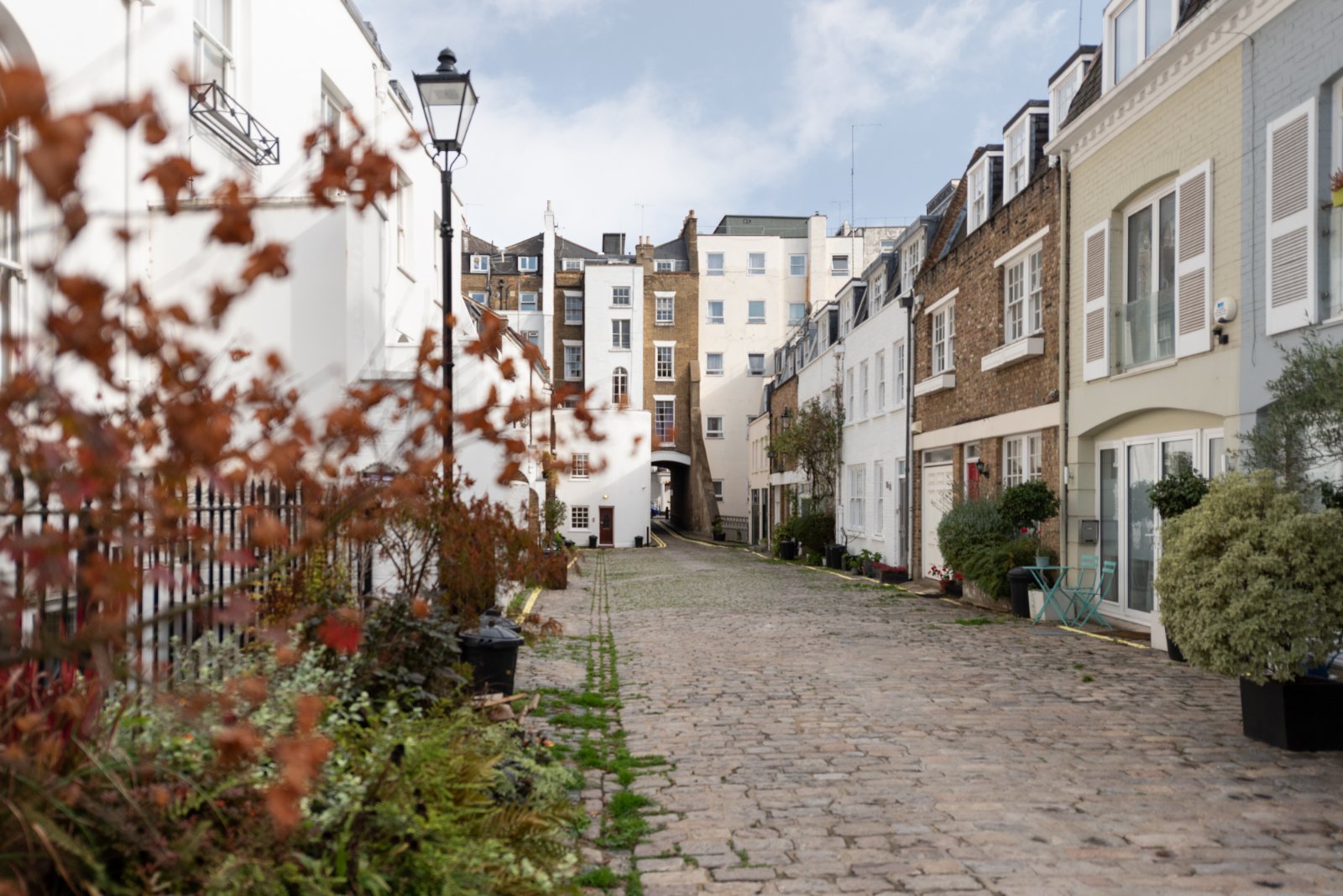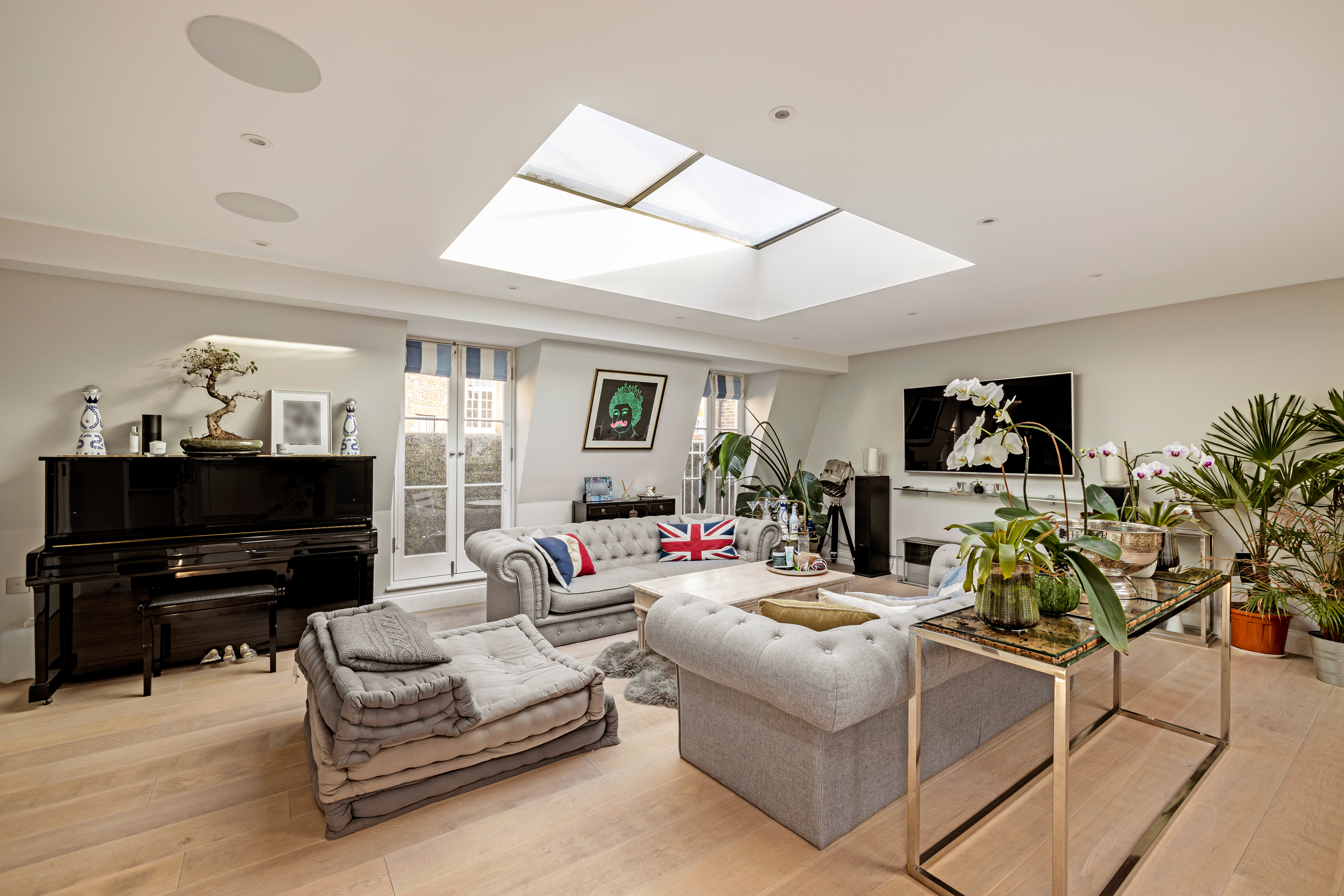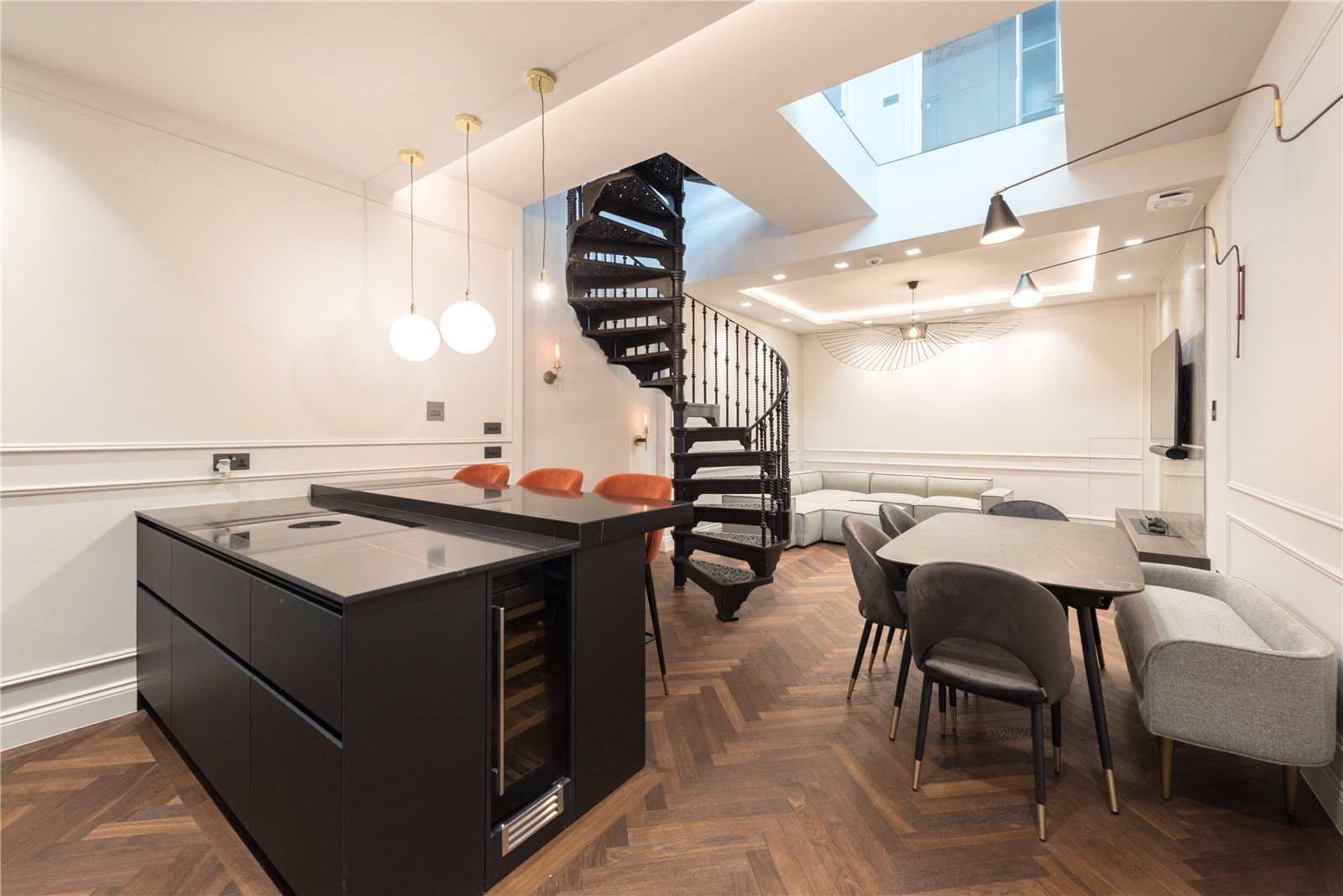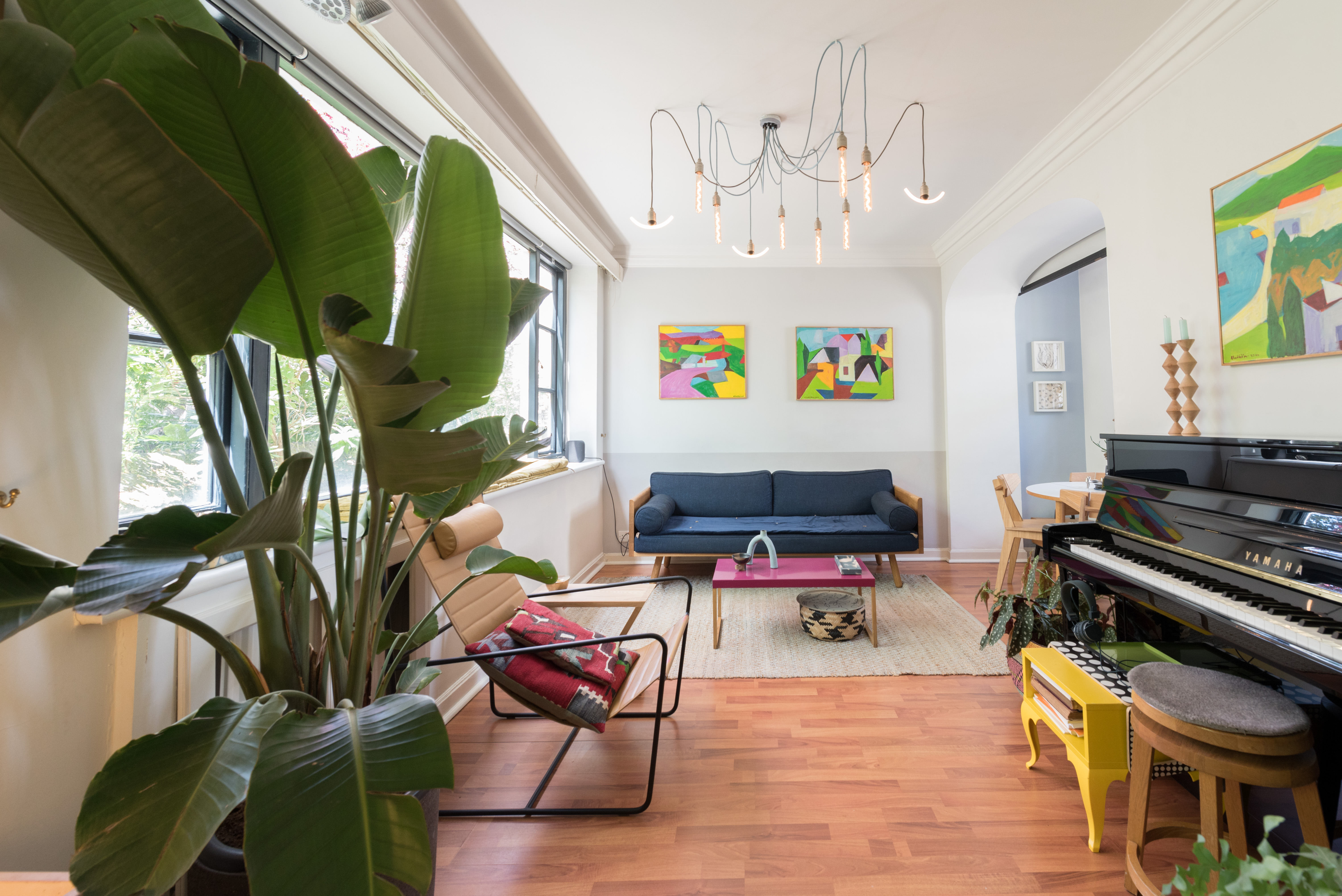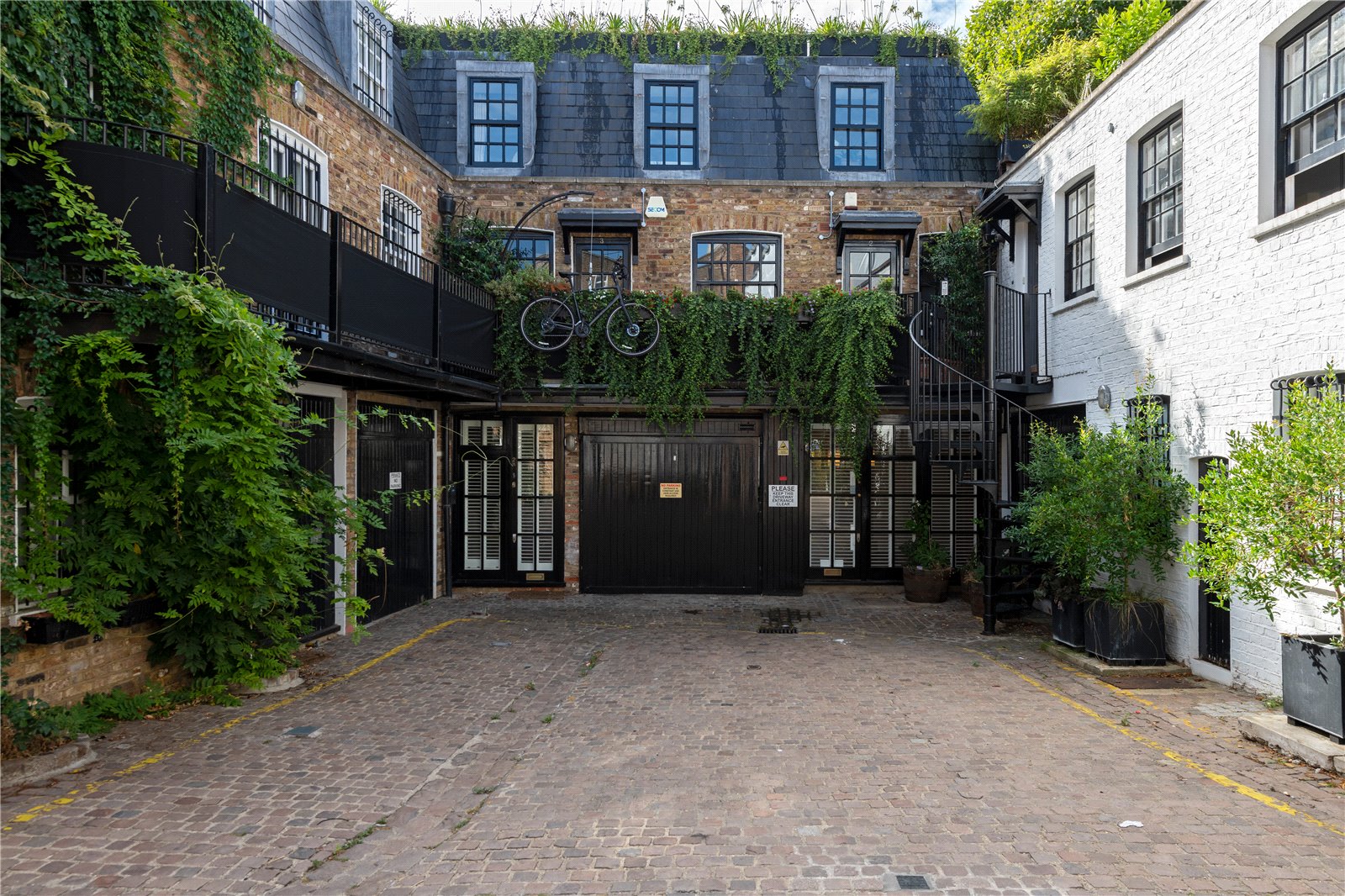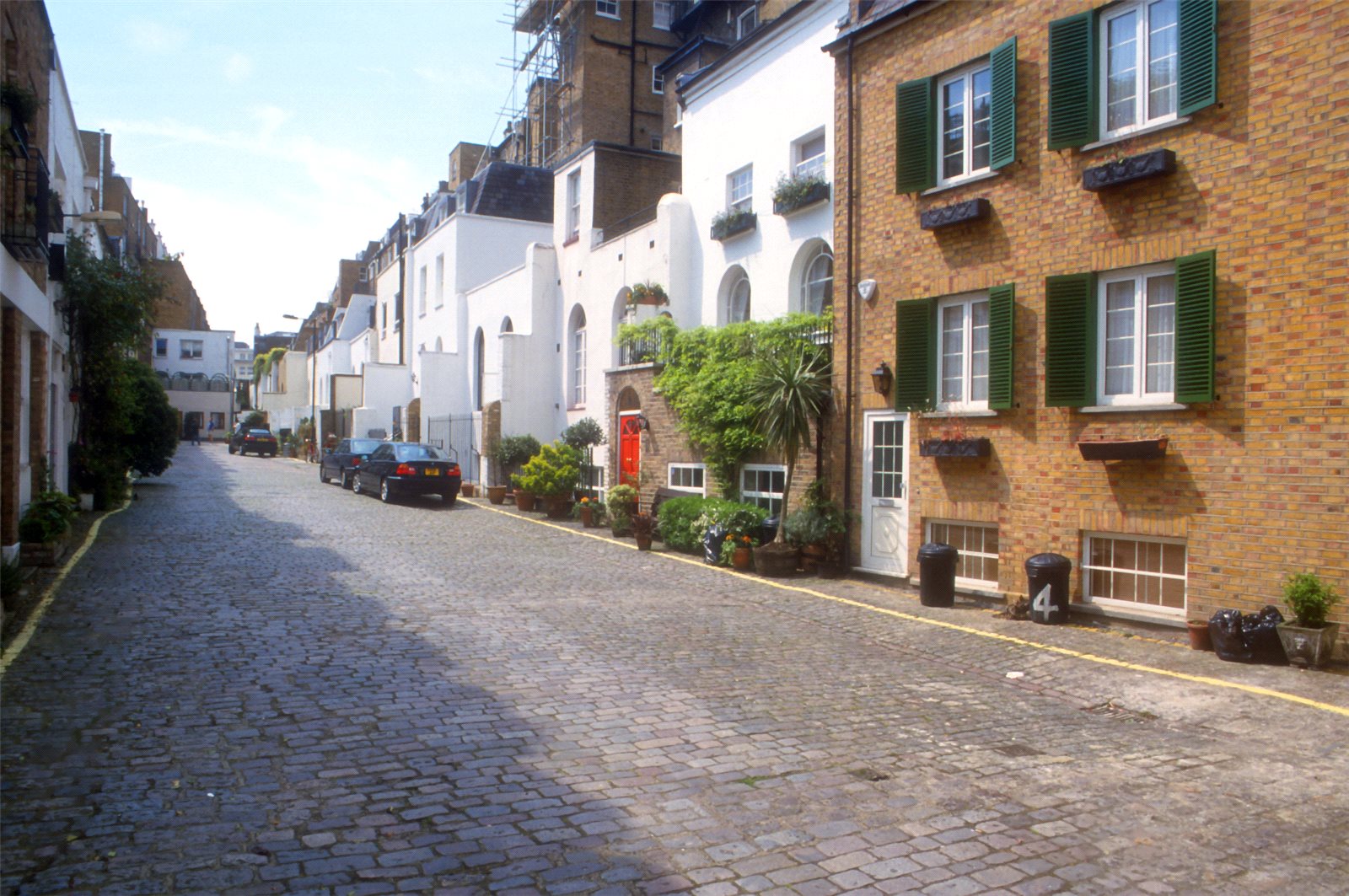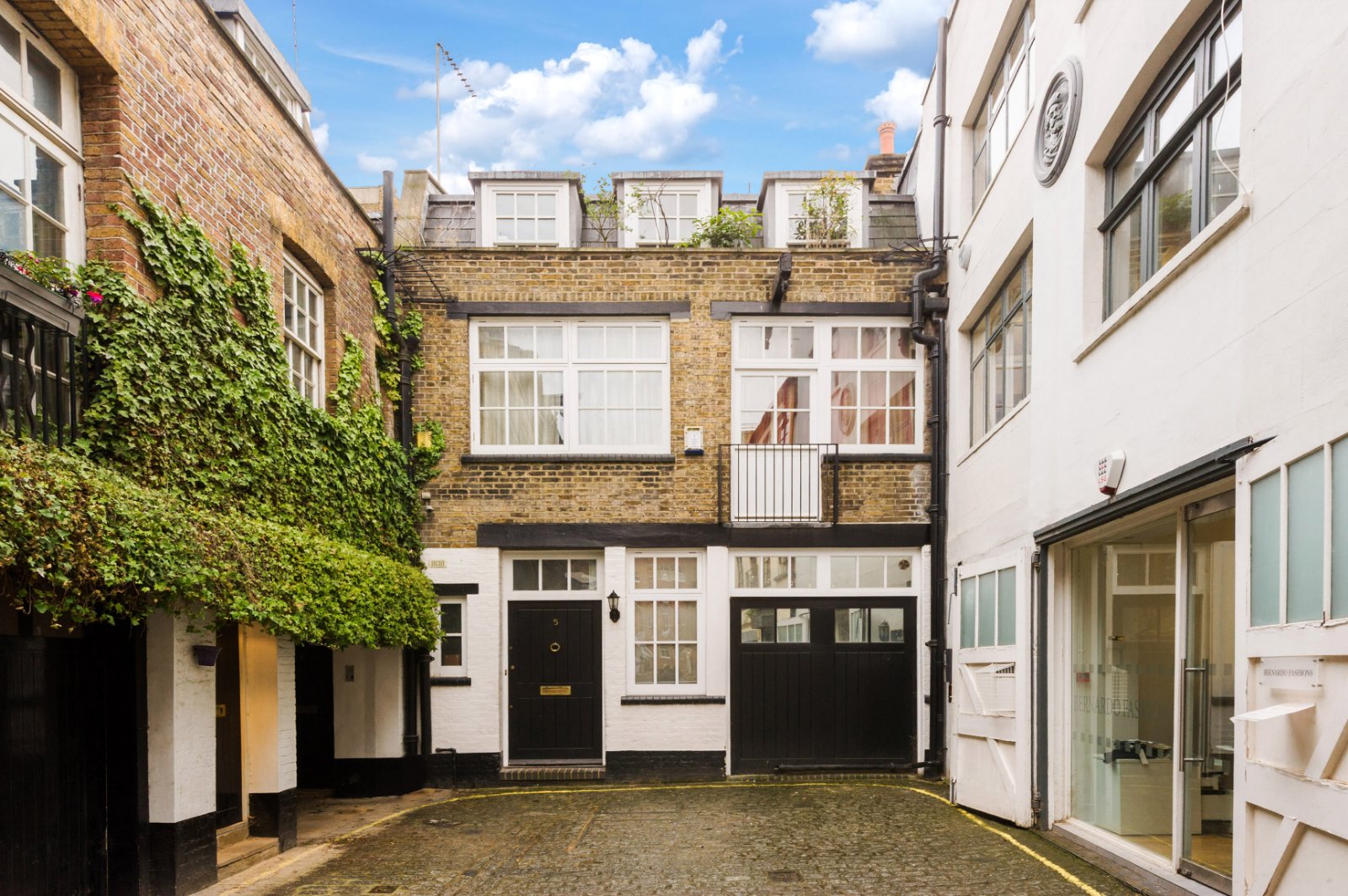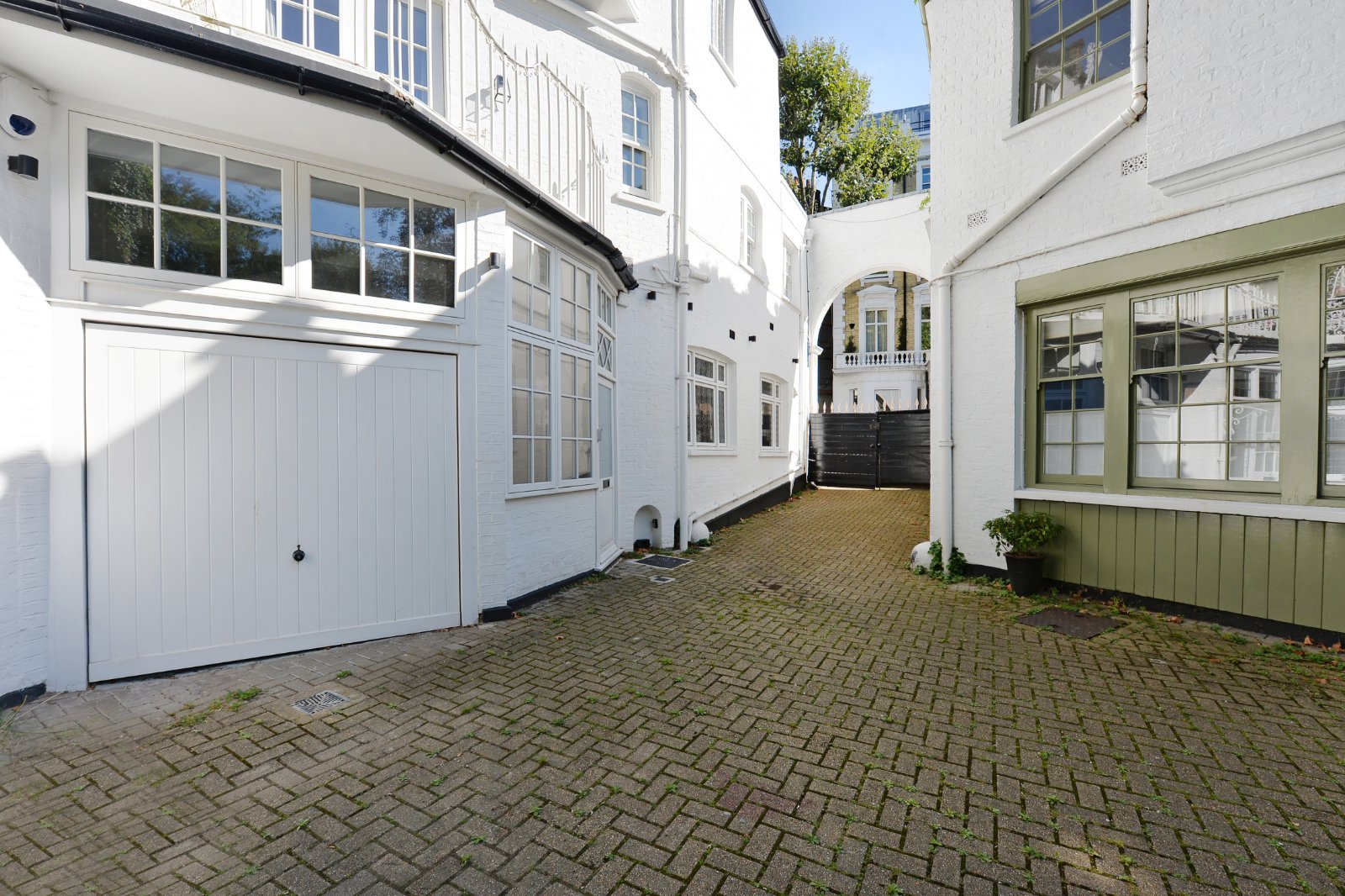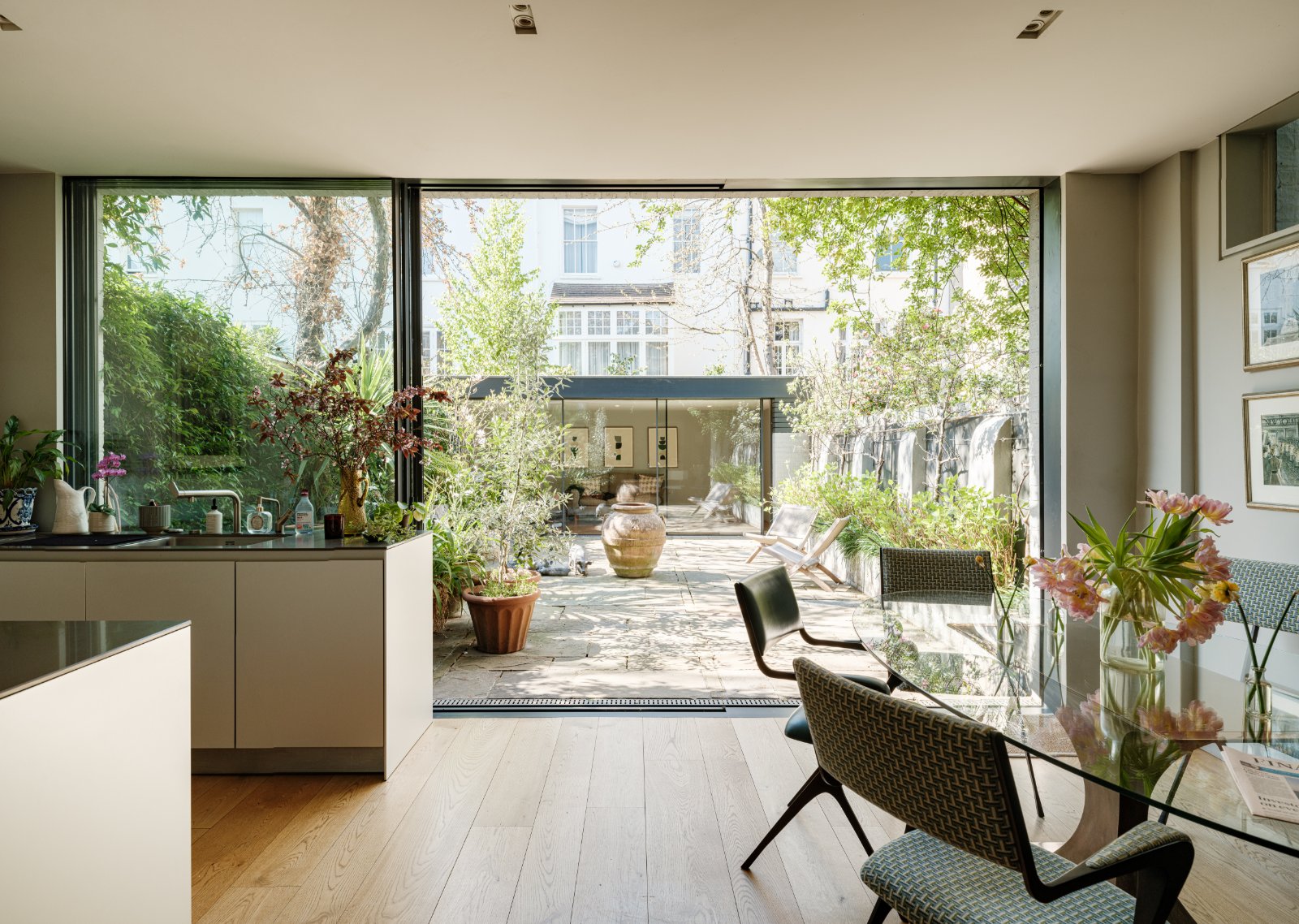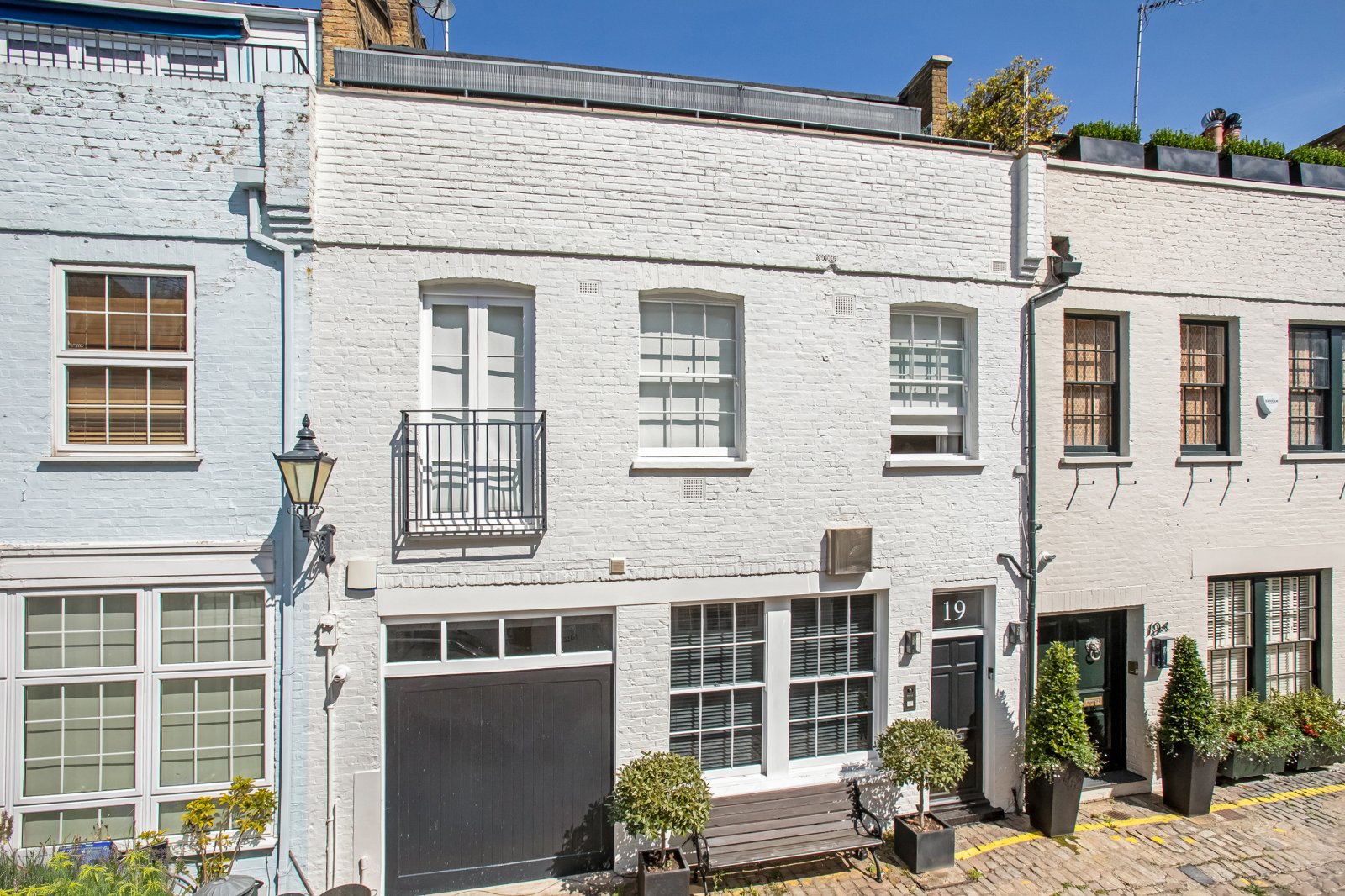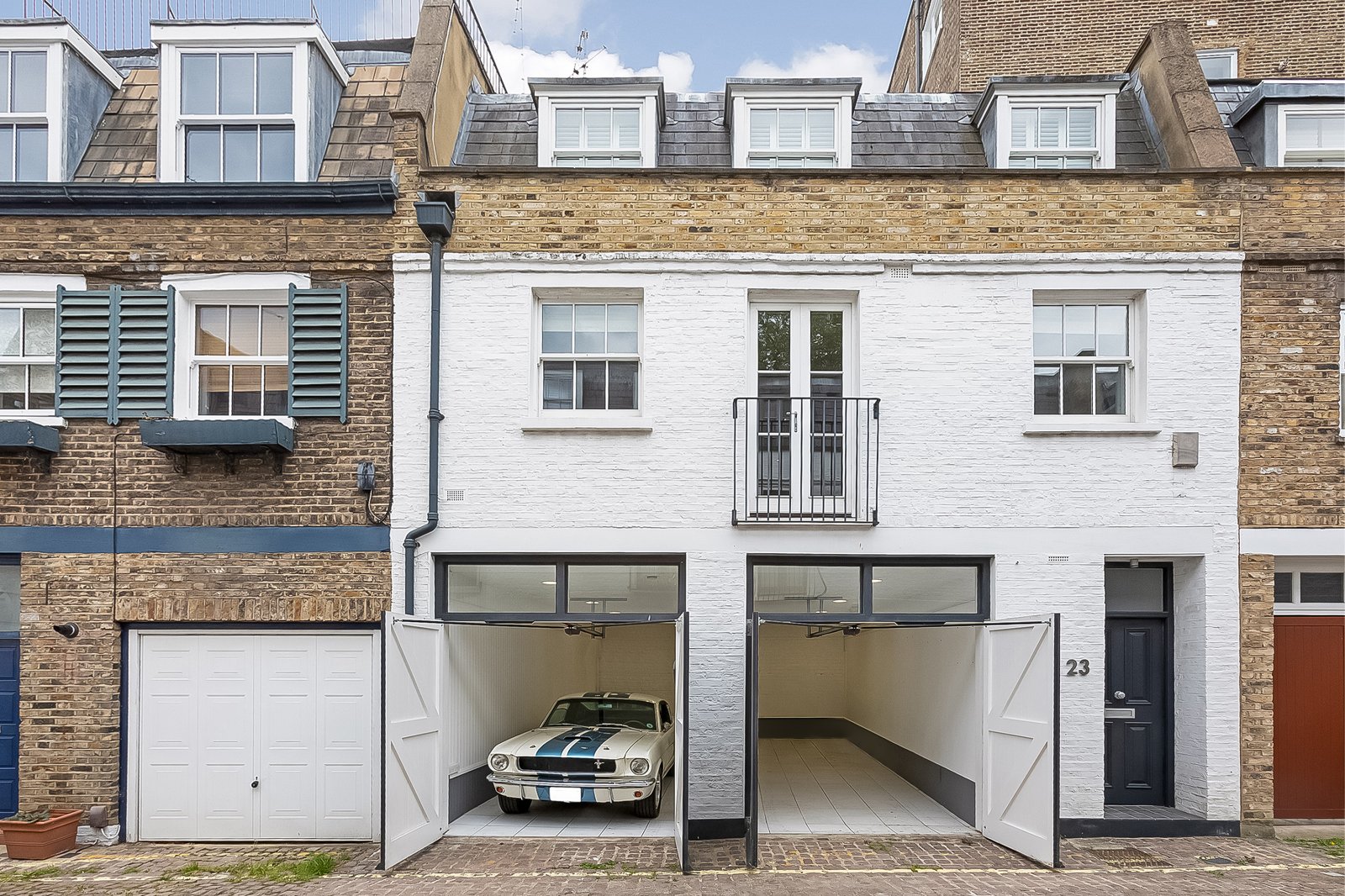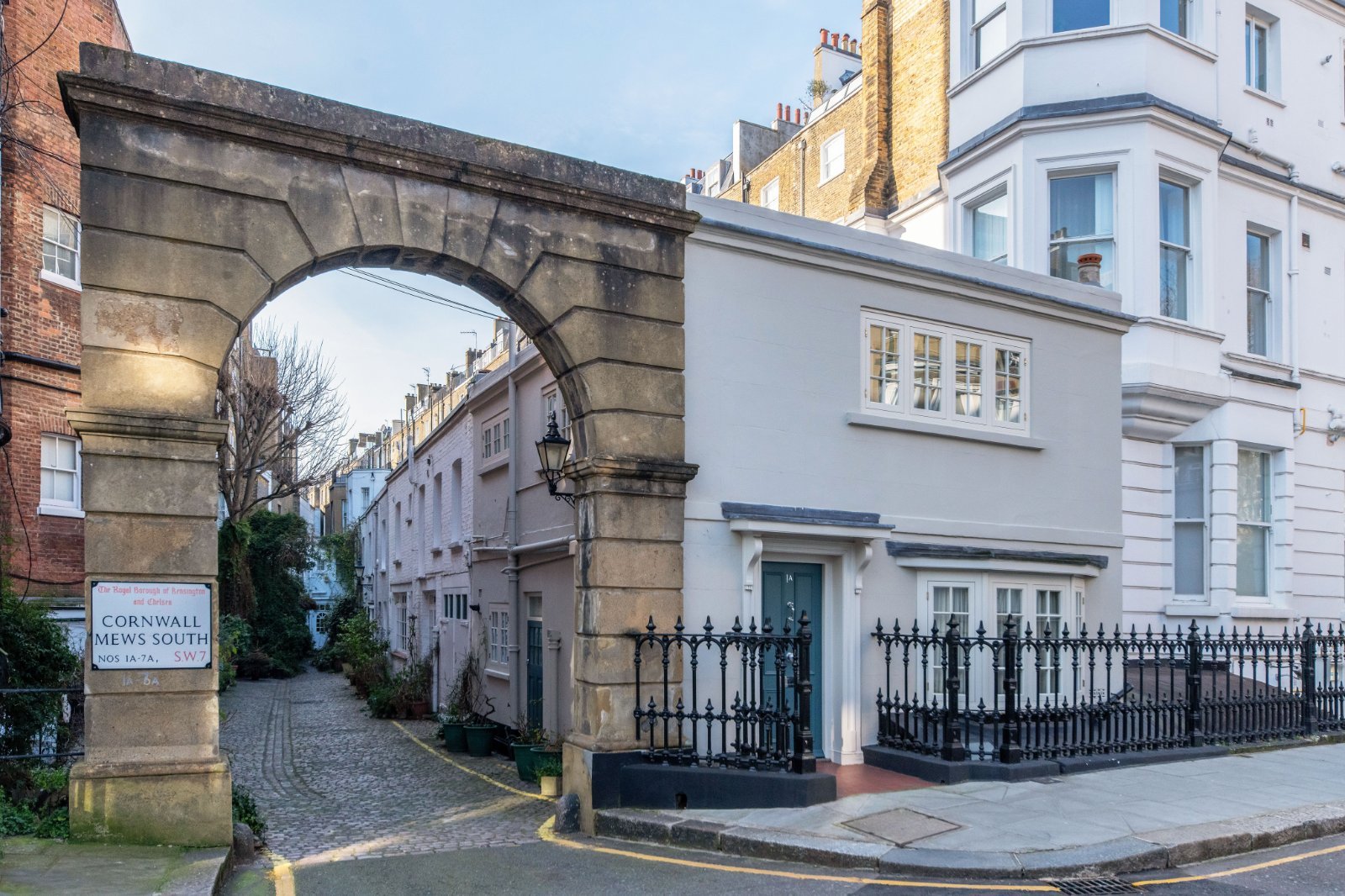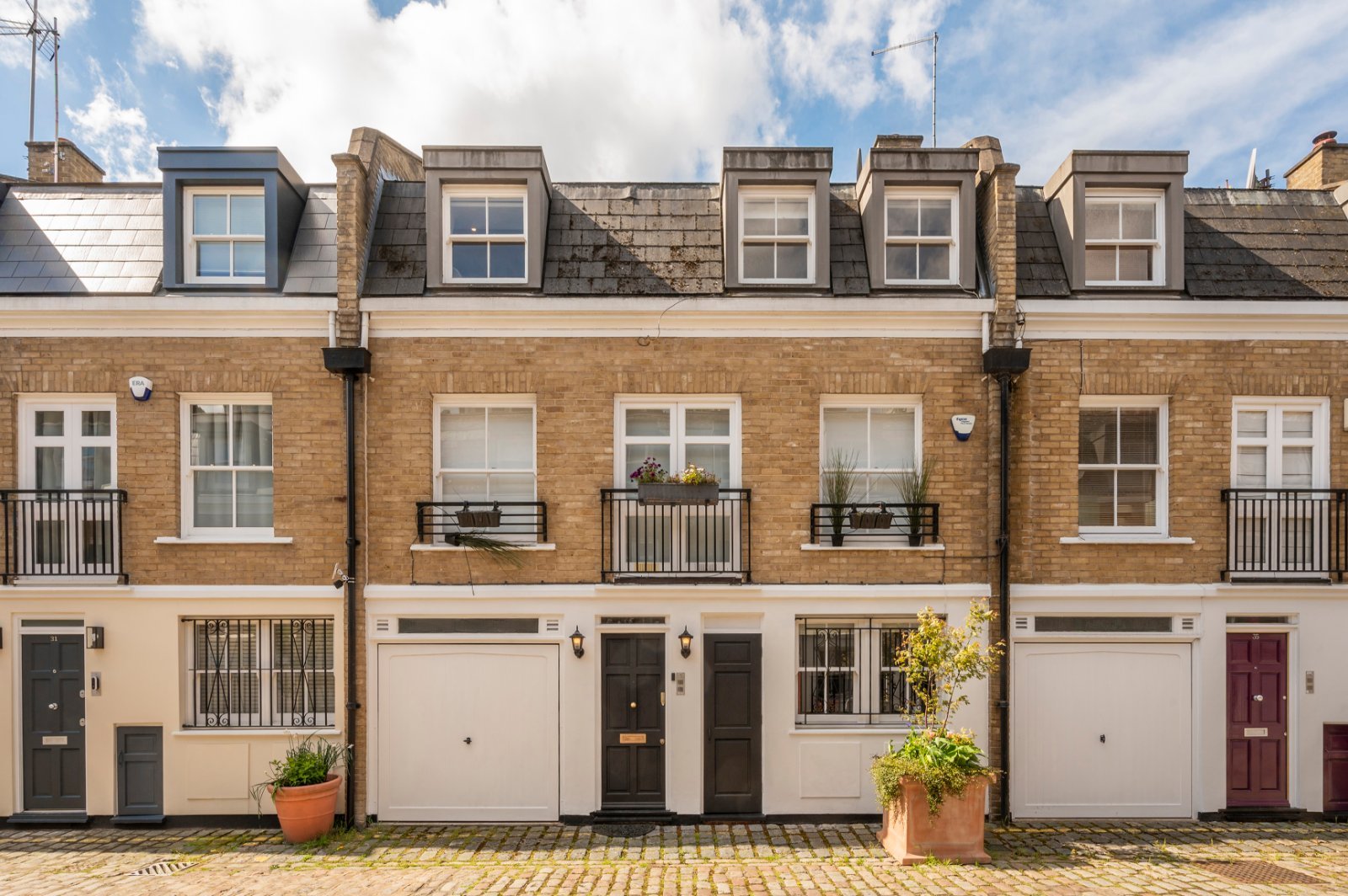What Is A Mews?
These fascinating locations offer the lucky few peace and tranquillity from the pace of London city life. We take a look at them in more detail.
- What is a mews?
- Why are mews called mews?
- What is a mews house?
- Who built mews houses?
- When were mews houses built?
- Where can I see mews homes for sale or rent?
What is a Mews?
A mews is a type of street. Mews are quintessentially pretty, often traffic free streets usually found to the rear of a row of extravagant 18th & 19th Century mansions. Mews streets are usually cobbled, they do not have pavements or sidewalks. that’s why many people who live in mews streets put plants and small trees outside their doors which adds charm and visual appeal, making London mews properties so sought after.
London hosts the greatest number of these quiet streets with picturesque, individual homes.
Why are mews called mews?
Mews became known as ‘mews’ after the Royal Mews which was a gigantic stable built on what is now Trafalgar Square. The King’s falcons where house there and they used to moult or ‘mew’ (from the French verb ‘muer’). From this, the stables became known as a mews.
What is A Mews House?
Mews houses were originally intended to stable horses, with accommodation for servants above which is why mews houses had stables and a coach house on the ground floor and the first floor housed a hayloft and a couple of rooms where the coach driver and the ostlers would stay.
Who Built Mews Houses?
Mews were built by London’s property developers when they were building mansions for Georgian and Victorian elites in the 18th and 19th Centuries.
When Were Mews Houses Built?
Many mews streets were built when London expanded to the west in the 18th century. Grand terraces of town houses were built on the fields in areas such as Mayfair, Kensington and Marylebone. The houses needed spaces for horses, coaches and servants, and the solution was to build a mews road to the rear of the town houses where stables could be built and accommodation could be provided for the servants.
There was usually a tunnel under the garden connecting with the basement of the house, so servants could slip out to the stables without disturbing the residents. A curious feature of almost any mews house is that it has no windows at the back, so servants could not spy on their betters enjoying a stroll in the garden.
Most mews were utilitarian places, with hard-wearing cobbles and a drain down the middle to take away the waste from the horses. The cobbles still exist in many and adds to the old-world charm of the streets. Many also have an impressive arch entrance and are often no-through roads to add to the quiet.

Why Are Mews So Popular?
In the early 20th century, the motor car and the servant shortage made mews houses unnecessary for many homeowners. Most were sold off and businesses such as taxi firms, garages and print shops moved in. Mews became a byword as scruffy backstreets, often used as locations for gritty gangland dramas on black-and-white TV.
Then, in the swinging 1960s, racing drivers such as John Surtees and James Hunt discovered they could buy a mews house for relatively little money and live above their cars. One of them was rally driver Antoine Lurot, founder of Lurot Brand, who sensed that mews houses were becoming very fashionable.
People began to realise that mews houses are very practical and have huge charm, and many are located in the very best areas.
Today, mews appeal most to people who want to live in a tranquil community environment in the heart of London yet be within walking distance of beautiful parks, independent shops, world class restaurants, bars and excellent schools. That’s why mews homes are seen by many as the perfect way to enjoy London life.
Today, mews homes have been developed so that their individuality is even more pronounced. Development of the basement, creation of roof terraces and clever use of the interior space ensure that each of these homes is different and often a hidden gem.
Small wonder that these centrally located, heritage-laden individual homes are such desirable residences which continue to grow in popularity.
Which Are London’s Most Popular Mews?
Here are the most sought-after mews in London:
- Kynance Mews, SW7
- St Luke’s Mews, Notting Hill, W11
- Napier Place, W14
- Pindock Mews, Maida Vale, W9
- Bathurst Mews, Hyde Park Estate, Bayswater, W2
- Hesper Mews, South Kensington, SW5
Discover More London Mews
- London Mews Video Gallery
- Mews Art
- Mews & Gems
- 4 mews property planting tips to transform your outdoor space
- 6 Notting Hill mews streets that are inspirational
- Explore 5 outstanding South Ken mews streets with Lurot Brand
- 5 beautiful Belgravia mews streets to call home
- Belgravia – London’s byword for beauty, elegance and style
- Paddington mews homes make excellent investments
- Marvellous mews! How a redesign transformed one Central London property
Where Can I See Mews for Sale or Rent?
Below you will find the latest sales and rental properties from Lurot Brand. We’re always adding new properties so do get in touch if you would to discuss your mews property search in more detail.
Subscribe
We'd love to share latest mews news and regular updates with you
